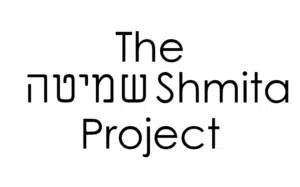By mandating a 7th year cessation of all agricultural production and the release of intra-Jewish debts, shmita is a highly ‘disruptive’ ancient Jewish practice with important lessons for today’s world. As Kohenet Rabbi Sarah Bracha Gershuny has pointed out: Shmita slows down the race to the top (of production and power), supports more equitable distribution of wealth, and promotes generosity, forward planning, and collective care, while encouraging self-control for the long haul. Shmita is about love of land and it is also about love of and for, all people and creatures.
It is by interrupting our drives to produce, accumulate wealth, compete, and establish boundaries, that we learn that drives are not the same as needs—that sharing, reducing what separates us, and watching out for one another make for a holier (holistic) existence.
Our parasha, in choosing the word ‘Naso’ (see Num 4:22), emphasizes this message. In Biblical Hebrew the phrase “Naso et Rosh” is used to mean “Take a census of…” however, Naso literally means “carry, lift up”, and also “forgive”; so the phrase ‘naso et rosh…’ literally means ‘Lift up the heads of…’.
Why is it that the act of census-taking employs language of up-lifting heads, noticing others, and the conferring of dignity? It is because of the tremendous value that Jews place on every individual and their uniqueness. We know from the creation story (Genesis 1:28) that each of us is created b’tzelem, in the image of The Holy One. Each person is alike and equally, infinitely valuable, while also unique in what they offer to society.
When taking a census, the tendency is to focus on the collective—how many people constitute the whole. Our Torah portion teaches that we should not regard people as mere numbers; rather, we are expected to find the Divine in the Other, ensure dignity, and even ‘carry’ the other at times. …And, we might imagine the impact of applying this way of ‘counting’ beyond census-taking e.g. to choosing teammates, greeting newcomers, and developing organizations.
If we use Shmita practice to assist us in moving towards equity, inclusion, and diversity by truly seeing others, sharing our bounty with them, and reducing indebtedness we unconsciously hold over them, we just might begin to realize the vision of Parker Palmer who writes: “If we dare to move through our fear, to practice knowing as a form of love, we might…enter a partnership with the otherness of the world.”
It is by interrupting our drives to produce, accumulate wealth, compete, and establish boundaries, that we learn that drives are not the same as needs—that sharing, reducing what separates us, and watching out for one another make for a holier (holistic) existence.
Our parasha, in choosing the word ‘Naso’ (see Num 4:22), emphasizes this message. In Biblical Hebrew the phrase “Naso et Rosh” is used to mean “Take a census of…” however, Naso literally means “carry, lift up”, and also “forgive”; so the phrase ‘naso et rosh…’ literally means ‘Lift up the heads of…’.
Why is it that the act of census-taking employs language of up-lifting heads, noticing others, and the conferring of dignity? It is because of the tremendous value that Jews place on every individual and their uniqueness. We know from the creation story (Genesis 1:28) that each of us is created b’tzelem, in the image of The Holy One. Each person is alike and equally, infinitely valuable, while also unique in what they offer to society.
When taking a census, the tendency is to focus on the collective—how many people constitute the whole. Our Torah portion teaches that we should not regard people as mere numbers; rather, we are expected to find the Divine in the Other, ensure dignity, and even ‘carry’ the other at times. …And, we might imagine the impact of applying this way of ‘counting’ beyond census-taking e.g. to choosing teammates, greeting newcomers, and developing organizations.
If we use Shmita practice to assist us in moving towards equity, inclusion, and diversity by truly seeing others, sharing our bounty with them, and reducing indebtedness we unconsciously hold over them, we just might begin to realize the vision of Parker Palmer who writes: “If we dare to move through our fear, to practice knowing as a form of love, we might…enter a partnership with the otherness of the world.”




